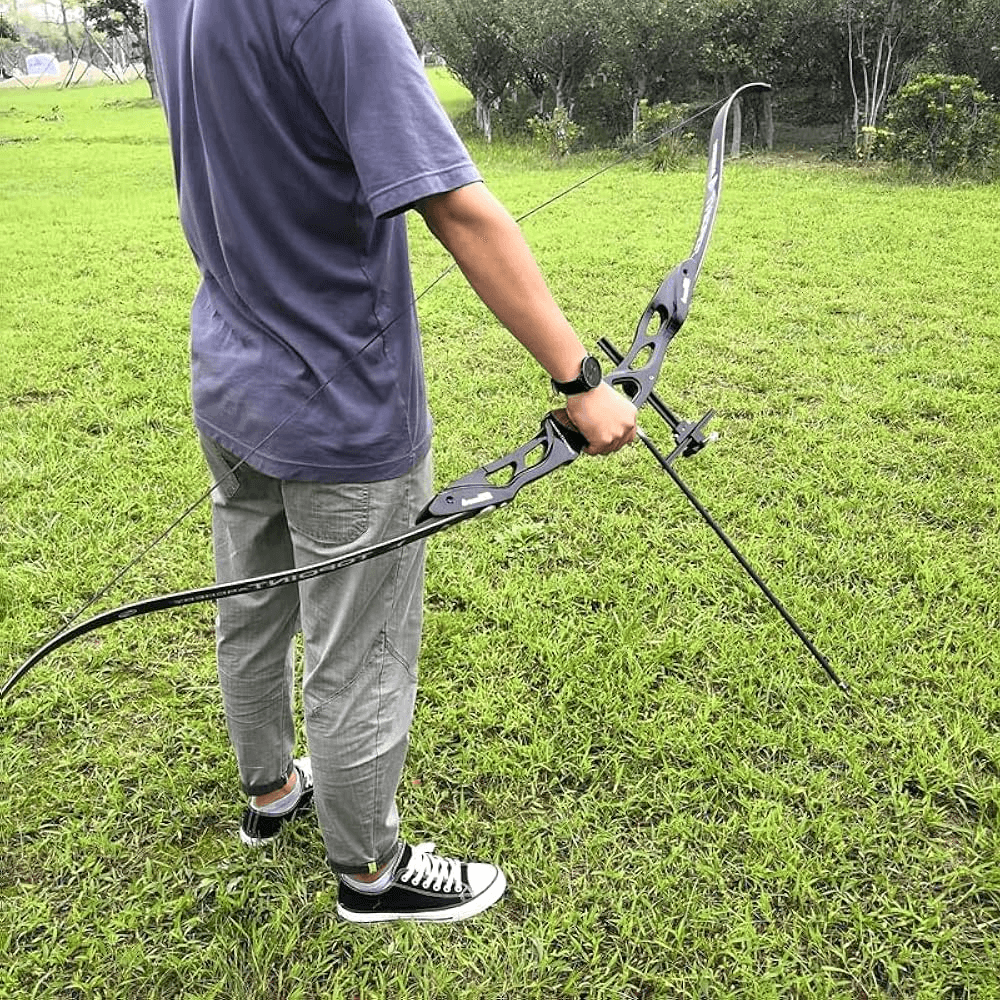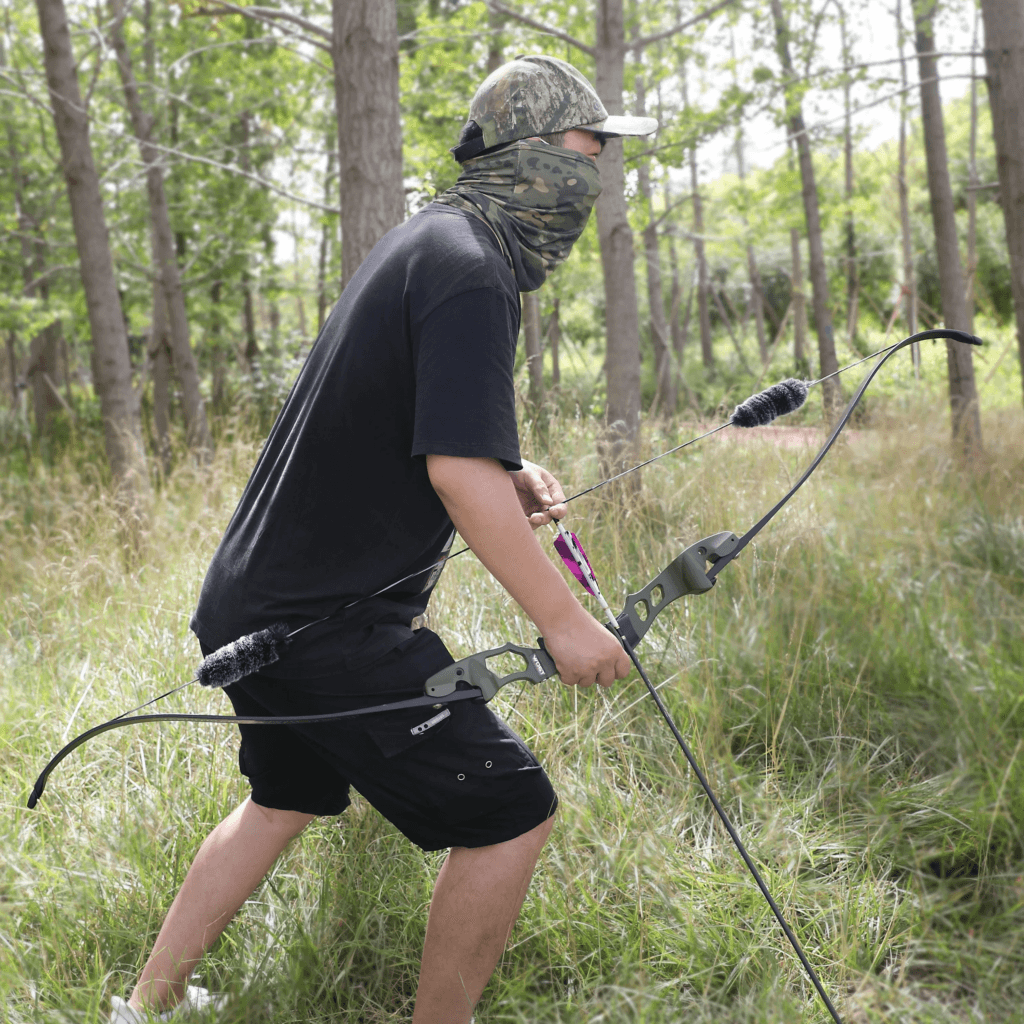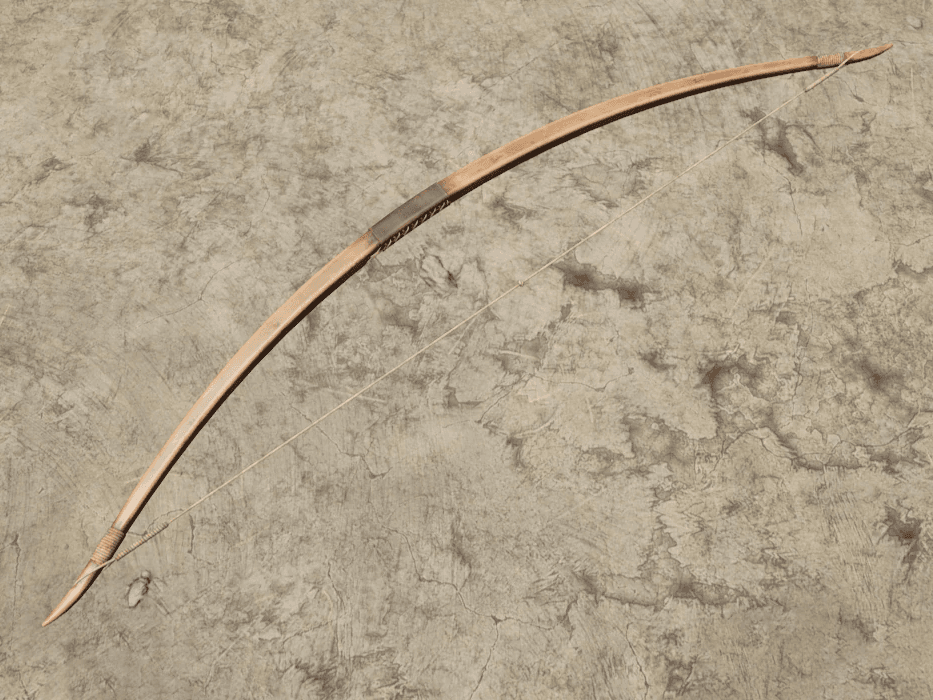Choosing between a recurve bow and a longbow can be a challenging decision for archers and hunters. Both have their unique strengths and weaknesses, making them suitable for different applications. This article will dive deep into their differences, explore the key features, and help you make an informed choice based on hunting, target shooting, or traditional archery preferences.
Understanding the Bow Designs: Longbow vs Recurve Bow
At first glance, the design difference between the recurve bow and the longbow is immediately apparent. The longbow is traditionally straight and usually taller than the archer, whereas the recurve bow has limbs that curve away from the archer at the tips.
Recurve Bow Design

The design of a recurve bow is optimized for efficiency. The curved tips allow for greater energy storage, which translates into faster arrow speeds when released. These bows are typically shorter, ranging between 48 and 70 inches in length. Due to their size and shape, recurve bows are easier to maneuver in dense environments such as forests or tight shooting ranges.
The curves at the end of the recurve bow’s limbs give it a distinct advantage in power. The limb curves allow the bow to store more energy, leading to faster arrow speeds. This design also makes the recurve bow compact and easier to maneuver in tight spaces like wooded areas.
- Power: Recurve bows are more efficient in transferring energy, resulting in higher arrow speed. A recurve can easily shoot at over 200 feet per second (fps).
- Length: Shorter than a longbow, typically between 48-70 inches, making it ideal for confined spaces.
- Take-down Models: Many recurve bows are take-down models, meaning the limbs can be removed from the riser for easy transportation and storage.
Longbow Design

The longbow is a simpler, more traditional design, known for its smooth draw and long limbs. Unlike the recurve bow, it lacks the curves at the tips, which means it stores less energy, but the draw is smoother and more forgiving.
- Power: A longbow is less efficient, often producing arrow speeds around 150 fps with similar draw weights as a recurve.
- Length: Often exceeds 68 inches, with some longbows reaching over 72 inches. This makes them harder to maneuver in dense forests.
- Smooth Draw: One of the key benefits of a longbow is the smooth draw cycle, which is easier on the archer’s muscles, allowing for better control at full draw.
Performance Comparison: Recurve Bow vs Longbow
Speed and Power
The recurve bow’s curved limbs allow it to generate more power with the same draw weight as a longbow. This makes the recurve ideal for hunters who need to shoot at greater speeds and shorter ranges. In terms of speed, the recurve generally outperforms the longbow, especially when shooting at close to mid-range distances.

For example, a recurve bow with a 40-pound draw weight will shoot faster and flatter than a longbow with the same draw weight. The recurve’s efficiency makes it an excellent choice for hunters and competitive shooters.
Stability and Accuracy
The longbow, while slower, offers greater stability. Its longer limbs provide a more forgiving shot, reducing the chances of error during release. This makes the longbow a favorite for long-distance shooting and for archers who prefer instinctive shooting without sights.

Noise
One major advantage of the longbow is its quiet shot. The smooth release creates less vibration and noise, making it perfect for hunting where stealth is essential. In contrast, a recurve bow can produce more noise due to its sharper release, though this can be mitigated with proper tuning.
Maneuverability
The shorter length of the recurve bow makes it easier to handle in tight spaces. Hunters who stalk through dense forests or use tree stands will find the recurve easier to manage. Longbows, while stable, can be cumbersome in such environments due to their size.
Draw Weight and Ease of Use
Draw weight is a critical factor when choosing between a recurve bow and a longbow.
Recurve Bow Draw Weight
The recurve bow requires more initial force to draw due to its curved limb design. However, this results in a faster arrow release. This makes the recurve suitable for archers who want quick, powerful shots without needing an excessively high draw weight.

For example, the draw weight of an Olympic recurve bow typically ranges between 30 to 50 pounds. This weight provides a balance between speed and control, allowing archers to hit distant targets with precision.
Longbow Draw Weight
The longbow, on the other hand, has a more gradual draw cycle. While it doesn’t store as much energy as the recurve, its longer limbs make it easier to draw and hold at full draw for extended periods. This is especially beneficial for archers who rely on instinctive shooting and need more time to aim without the fatigue caused by holding a heavier draw weight.
Hunting with a Recurve Bow vs Longbow
When it comes to hunting, both the recurve bow and the longbow have their merits. The choice ultimately depends on the hunting environment and the type of game.
Recurve Bow for Hunting

The recurve bow excels in situations where speed and power are essential. Its compact size allows for greater mobility, making it easier to move through dense brush or take shots from a tree stand. The recurve is also better suited for shorter-range shots, as its faster arrow speed reduces the need for precise distance estimation.
Longbow for Hunting
The longbow, though slower, has a smoother, quieter release, which is ideal for hunters who need to remain silent. This makes it perfect for stalking game at a distance. Many traditional hunters prefer the longbow for its historical connection to archery and its natural feel.
A well-placed shot from a longbow can be just as lethal as one from a recurve, but it requires more skill in estimating distance due to the slower arrow speed. The longer limbs of the longbow can make it less practical in dense forests, but its accuracy at long distances is unmatched.
Key Statistic: In a survey of experienced hunters, 60% reported that they preferred the recurve bow for its versatility and power, while 40% favored the longbow for its quietness and traditional appeal.
Customization and Accessories
One of the biggest advantages of the recurve bow is its ability to be customized. Many modern recurve bows can be fitted with sights, stabilizers, and arrow rests, allowing for improved accuracy and comfort. This makes the recurve a great choice for those looking to upgrade their bow as they progress in their archery skills.
The longbow, on the other hand, is typically shot without any accessories, sticking to its traditional roots. This appeals to purists who prefer a minimalist setup, but it can make shooting more challenging for beginners.
Costs and Availability
Recurve Bow Costs
Due to its complex design and customization options, a recurve bow can be more expensive than a longbow. High-end recurve bows can range from $200 to $1,500, depending on the brand, materials, and included accessories. However, there are also budget-friendly options, particularly for beginners. The availability of used recurve bows for sale makes it easier for newcomers to the sport to find affordable options.
Longbow Costs
In comparison, longbows are generally less expensive due to their simpler construction. A quality longbow typically ranges from $150 to $600, though custom-made bows can exceed this price. Beginners can find excellent options in the longbow market that offer great performance without the high cost associated with top-tier recurve bows.
Key Statistic: On average, the cost of a mid-range recurve bow is about 30% higher than a comparable longbow, largely due to its more complex construction and customization options.
Making the Final Choice: Longbow or Recurve Bow?
Choosing between a recurve bow and a longbow comes down to your specific needs and preferences. If you’re looking for speed, power, and versatility, the recurve bow is the superior option. It excels in hunting, target shooting, and offers the ability to be fine-tuned with modern accessories. The recurve bow is also more forgiving in situations where quick shots and mobility are required, such as hunting in dense forests.
On the other hand, if you value tradition, simplicity, and long-range accuracy, the longbow may be the better choice. It provides a smooth, stable shot and is quieter, making it ideal for hunting scenarios where stealth is crucial. Its minimalist design is also appealing to archers who prefer instinctive shooting and a more traditional approach to the sport.
Which bow is better for beginners: recurve or longbow?
For beginners, a recurve bow is often the best choice due to its versatility and ease of customization. However, a longbow offers a smoother draw and can be easier to master for those interested in traditional archery.
What is the difference in arrow speed between a recurve and a longbow?
A recurve bow typically shoots arrows faster, with speeds often exceeding 200 fps, while a longbow averages around 150 fps with similar draw weights.
Which bow is quieter: recurve or longbow?
The longbow is quieter than the recurve bow due to its smoother release and longer limbs. This makes it a better choice for hunters who need to remain stealthy.
What is the draw weight of an Olympic recurve bow?
The draw weight of an Olympic recurve bow ranges between 30-50 pounds, depending on the archer’s strength and competition requirements.
Can a recurve bow be used for long-range shooting?
Yes, a recurve bow can be highly effective for long-range shooting, especially when fitted with modern accessories like sights and stabilizers. However, the longbow’s stability makes it more forgiving over long distances.

